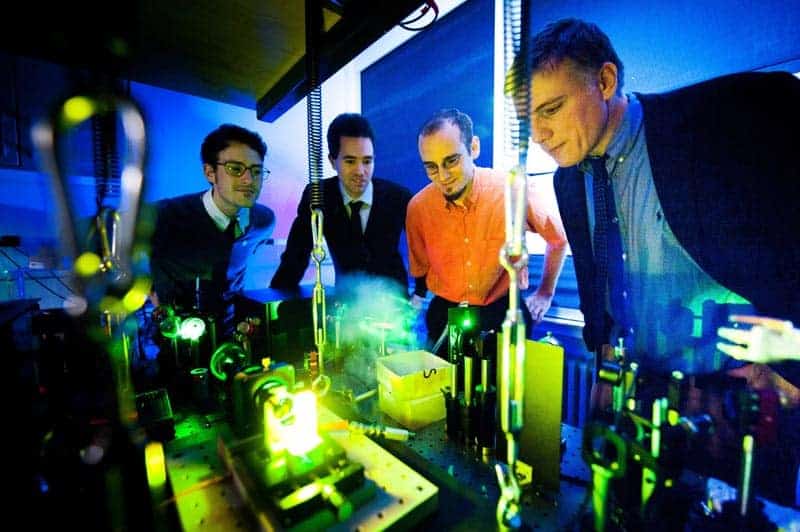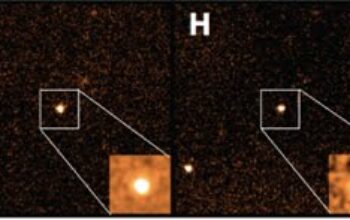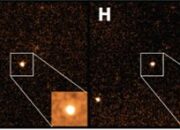Quantum mechanics presents a bewildering realm where the behavior of subatomic particles defies classical intuitions. Among the myriad of phenomena inherent to quantum physics, the formation of Bose–Einstein condensates (BECs) emerges as one of the most intriguing. First theorized by Satyendra Nath Bose and Albert Einstein in the early 20th century, BECs are states of matter wherein a collection of bosons occupies the same quantum state, effectively behaving as a single macroscopic quantum entity. This article elucidates the mechanisms behind this striking phenomenon, the implications of BECs in various fields of research, and the diverse applications that arise from harnessing such quantum states.
Understanding Bosons and BEC Formation
Bosons are particles characterized by integer spin, allowing them to conform to Bose-Einstein statistics. This class includes particles such as photons, gluons, and the well-known Higgs boson. The fundamental distinction between bosons and fermions (particles with half-integer spin) underlies the behavior of these particles at ultra-low temperatures. Fermions are subject to the Pauli exclusion principle, which prohibits multiple identical fermions from occupying the same quantum state. In contrast, bosons can congregate in the same state, leading to a collective behavior that is quintessential for the manifestation of BECs.
The synthesis of a Bose–Einstein condensate requires specific experimental conditions. Typically, this involves cooling a dilute gas of bosonic atoms to temperatures approaching absolute zero (0 Kelvin). Under these extreme conditions, thermal de Broglie wavelengths become comparable to the interparticle spacing, prompting a significant overlap of atomic wave functions. Consequently, as interactions among the particles intensify, a phase transition occurs, culminating in the emergence of the condensate—a macroscopic occupation of the ground energy state. This transition is frequently observed in atomic gases composed of alkali metals, such as rubidium-87 or sodium-23, which serve as ideal candidates for BEC formation due to their accessible cooling techniques.
Quantum Coherence and Macroscopic Quantum Phenomena
An essential aspect of BECs is their quantum coherence. At nanoscales, the individual constituent particles exhibit coherent wave-like behavior that persists even as the system is scaled to macroscopic dimensions. This coherence is paramount for numerous intriguing phenomena, including superfluidity and the Josephson effect. Superfluidity is a state of matter characterized by the ability of a fluid to flow without viscosity, a property that can be directly attributed to the coherent wave function of the BEC. In this regime, frictionless flow allows for remarkable kinematic properties, amplifying the pursuit of insights into quantum hydrodynamics.
The Josephson effect manifests in systems where two BECs are coupled across a barrier, allowing for particle tunneling, akin to the behavior observed in superconductors. This tunneling results in oscillations between the two condensates, leading to applications in quantum computing and highly sensitive measurements. Notably, these condensed matter systems serve as testbeds for fundamental physics, providing unique avenues to explore the interplay of quantum mechanics and statistical behavior.
Experimental Realization and Techniques in BEC Research
The successful creation of BECs hinges on sophisticated laser cooling and trapping techniques. Laser cooling techniques exploit the Doppler effect to decelerate atomic motion. By employing specific frequencies of laser light, the momentum of individual atoms can be reduced significantly, facilitating the attainment of the requisite low temperatures for BEC formation.
Magnetic traps, optical lattices, and evaporative cooling are prevalent techniques utilized within experimental setups. Magnetic traps utilize non-uniform magnetic fields to confine atomic particles, while optical lattices employ the interference patterns of laser beams to create periodic potentials. Evaporative cooling further assists in refining the temperature of the atomic ensemble, wherein less energetic atoms are selectively removed, thereby allowing the remaining atoms to lose kinetic energy. These state-of-the-art methodologies remain archetypical in the von Neumann laboratory ethos, advancing the frontiers of quantum mechanics.
Applications of Bose–Einstein Condensates
The implications of BECs extend beyond mere academic curiosity, intersecting with various applied fields, including quantum computing, precision measurement, and fundamental tests of quantum mechanics. The inherent behaviors of BECs can be harnessed to develop quantum information technologies. For instance, harnessing quantum superposition and entanglement in BECs promises advancements in qubit platforms, paving the pathway for robust quantum computing architectures.
Furthermore, BECs serve as tools for probing quantum many-body physics, allowing for the exploration of phenomena such as topological phases of matter and quantum phase transitions. The study of excitations in BECs offers an unparalleled opportunity to elucidate non-trivial collective dynamics that can yield insights into other complex systems, such as high-temperature superconductors or two-dimensional materials.
Conclusion
In summation, the study of bosons induced into Bose–Einstein condensates represents a fertile ground for exploration at the intersection of fundamental and applied physics. The elegance of quantum mechanics mirrored in the collective behavior of particles, the practical applications spanning diverse realms, and the continuous development of experimental techniques underscore the revolutionary potential of condensed matter physics. As researchers continue to delve into the nuanced details of BECs, the elucidation of their properties promises not only to expand our comprehension of nature but also to foster technological innovations that could transform contemporary scientific landscapes.










